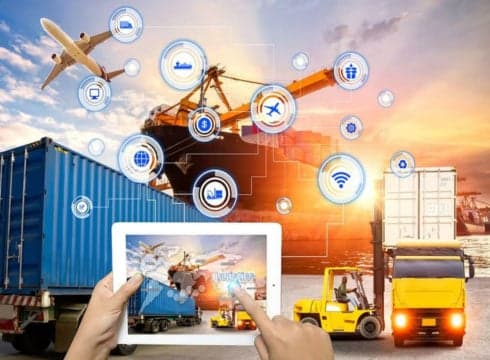Expect the bigger conglomerates to continue to partner with technology partners
Expect companies to put more emphasis on increasing the visibility of their operations
Expect companies to focus more and more on automated optimal routes
Inc42 Daily Brief
Stay Ahead With Daily News & Analysis on India’s Tech & Startup Economy
2018 saw a market that made the consumer king. Focus on enhancing customer experience and reducing the product delivery cycle meant that organizations invested heavily in making their supply chains more efficient and transparent.
However, with the pressure of not passing the incremental logistics costs to the end-consumer, companies also tried to cut back on the logistics costs involved.
With organisations having such contemplating choices, here are the logistics trendos to expect in 2019:
Increase In Supply Chain Visibility
Supply chain visibility is the “use of tracking and monitoring mechanisms to increase transparency and promote integrity throughout the supply chain as a whole”. The movement towards an increase in supply chain visibility stems from the need to mitigate conflicting corporate interests as well as a rise in consumer demand for greater transparency.
Modern AI-based solutions provide real-time tracking of fleet and workforce from the first mile to long haul to the last mile. It allows businesses to analyse the entire supply chain operations using heat maps, trend lines and planned vs actual SLA comparisons.
With transparency becoming an increasingly important aspect of customer experience, expect companies to put more and more emphasis on increasing the visibility of their operations.
Historical Data-Based Planning Will Shorten Delivery Cycles
Logistics companies continue to sit on a pile of data. Those who unlock this potential gold mine would be able to gain critical insights of their operations, which will help in increasing efficiency and cutting down on logistics costs.
Manual route planning can lead to inefficiency and overhead logistics costs. New-age solutions provide automated delivery routes after considering multiple real-life constraints and existing historical data like traffic, shipment volume, shipment type, vehicle type, stop durations, delivery times and more.
With last-mile deliveries becoming the differentiating factor, expect companies to focus more and more on automated optimal routes that minimize human dependency and increase efficiency in the supply chain.
Omnichannel Supply Chains Will Become Standard
2019 will see more supply chains pursue omnichannel strategies, eliminating inconsistencies and disparate systems and creating a cohesive, shopping experience for consumers. In pursuit of removing unnecessary components from the supply chain and shortening the product delivery cycle, more and more retailers will look to up their omnichannel game.
As ecommerce companies continue to grow, expect a growing number of retailers to feel the pressure and shift to omnichannel medium from their traditional distribution models.
The Emergence Of Elastic Logistics
Elastic logistics is the ability of sourcing and logistics providers to expand and shrink their capabilities across geographies in response to market and demand fluctuations, changing consumer preferences, and socio-political changes.
During festivals or other special occasions, the normal supply-demand cycle of products goes for a toss. For example, during the Diwali season, e-commerce players and retailers face a sudden surge in demand. To cope up with this sudden burst of demand, companies often hire additional staff or add extra hours of work to the existing personnel.
However, the number of personnel to be hired and the additional amount of deliveries in the extra hours are factors that are only estimated by supply chain managers based on their experience and intuition.
Even though the estimate can be correct for a typical day, the festive spike in demand means that there is a good chance of the predictions going haywire. In such a situation, a shortage of personnel can affect the delivery, and an overabundance of staff can lead to extra costs for the company.
Openness To New Technologies Will Increase
Logistics as an industry has been quite laid back when it comes to adopting new technology. It wasn’t until recently that the major industry players started making changes to their business models, e.g. regarding freight transparency, online booking or automation of processes.
This lack of initiative has created a perfect playground for young and dynamic companies who are trying to disrupt this industry.
Many global players have already partnered with tech startups to gain competitive advantages and not fall behind. Expect the bigger conglomerates to continue to partner with technology partners to add innovation to their operations.
{{#name}}{{name}}{{/name}}{{^name}}-{{/name}}
{{#description}}{{description}}...{{/description}}{{^description}}-{{/description}}
Note: We at Inc42 take our ethics very seriously. More information about it can be found here.


